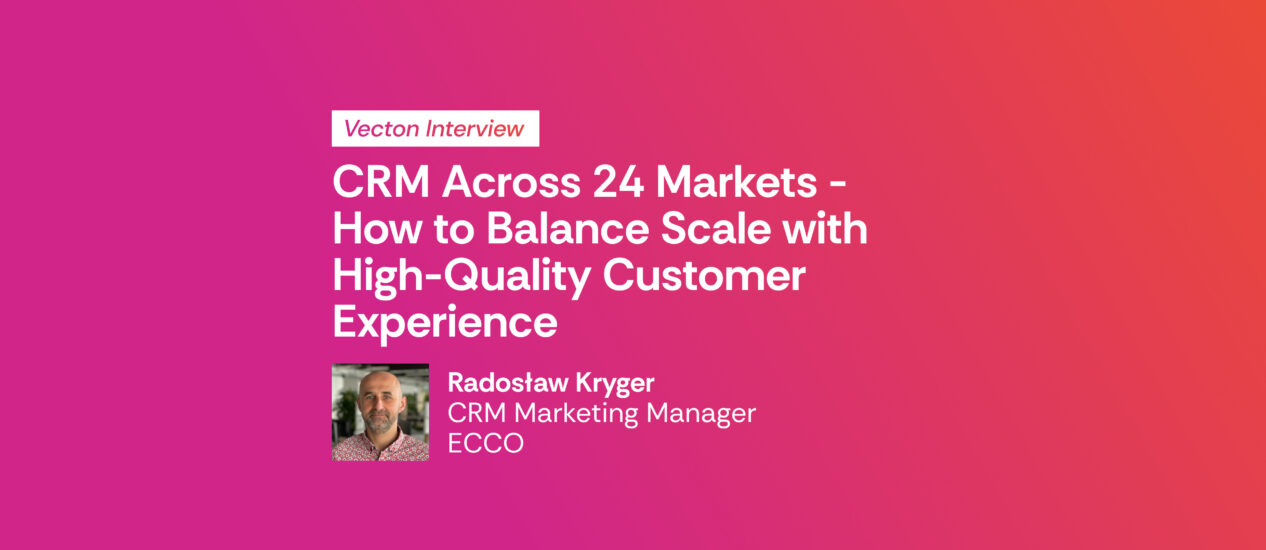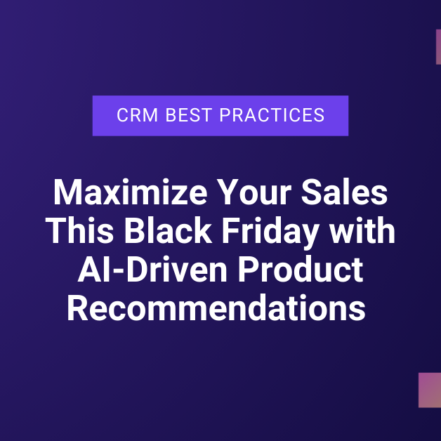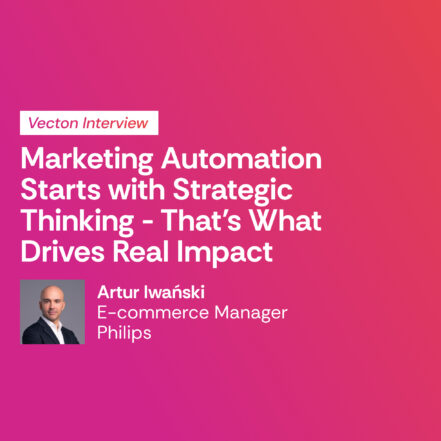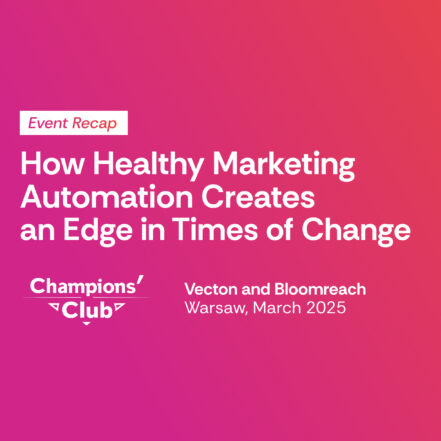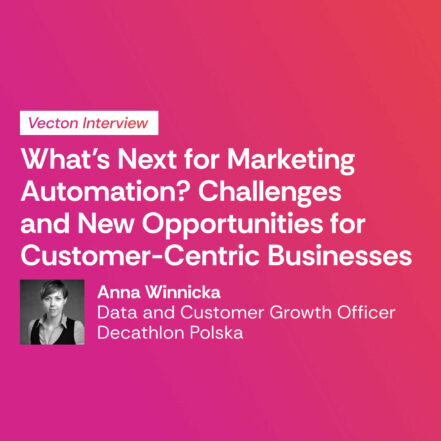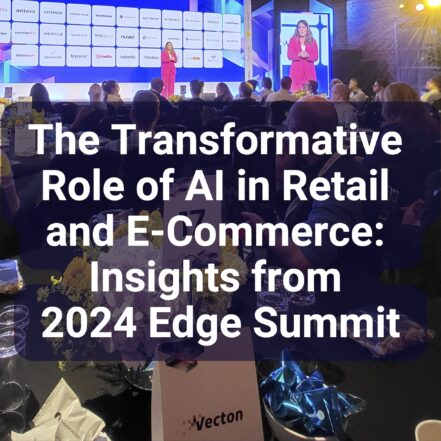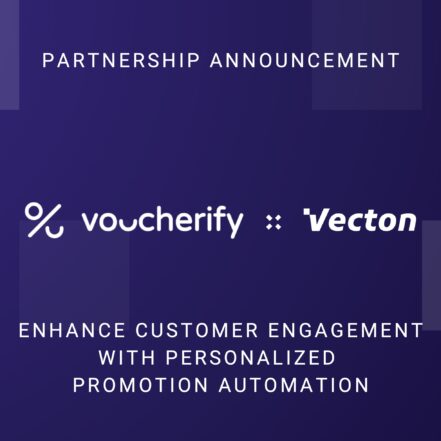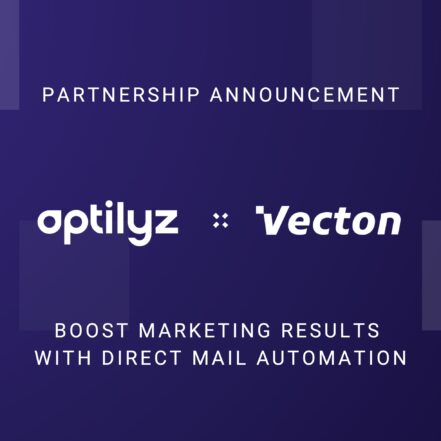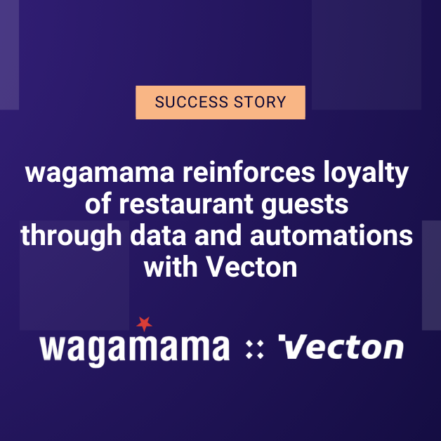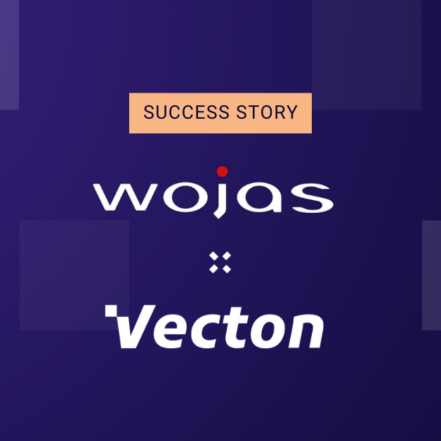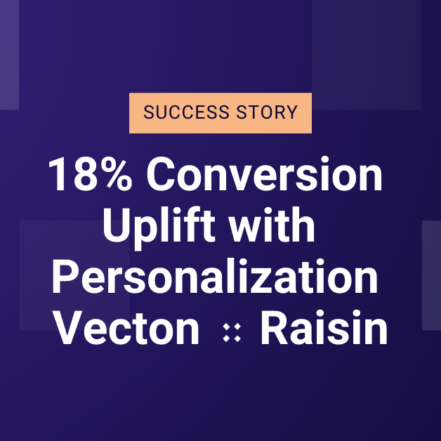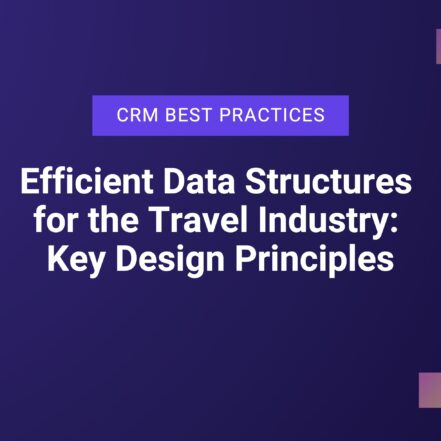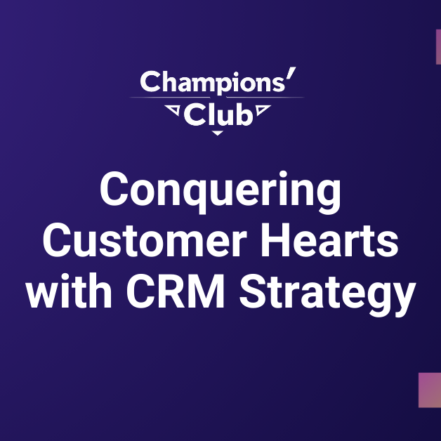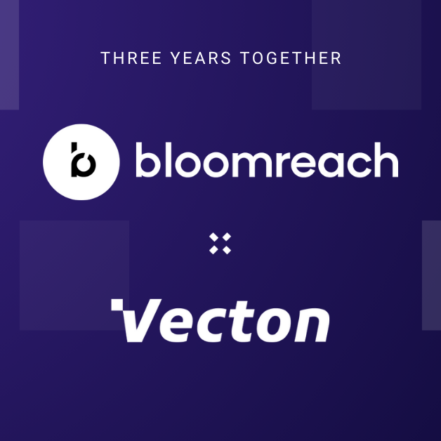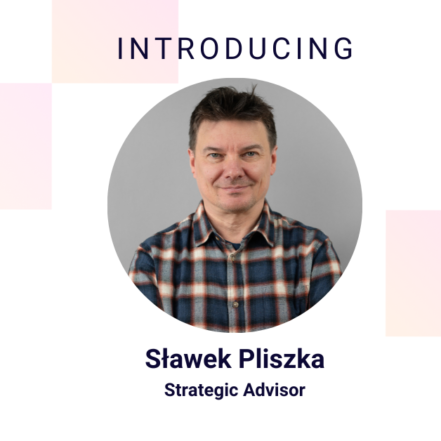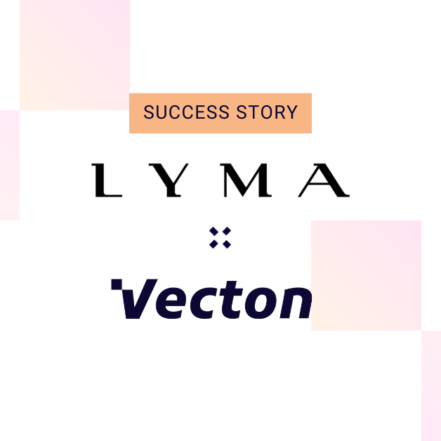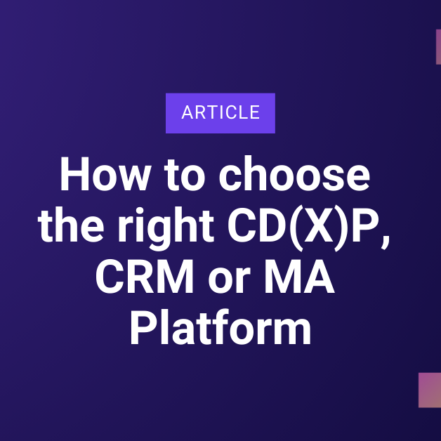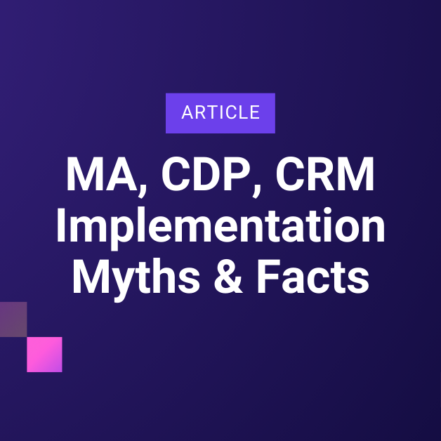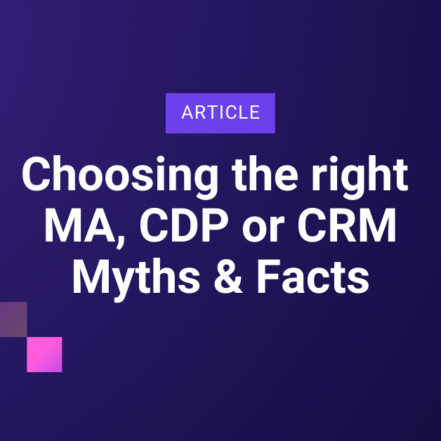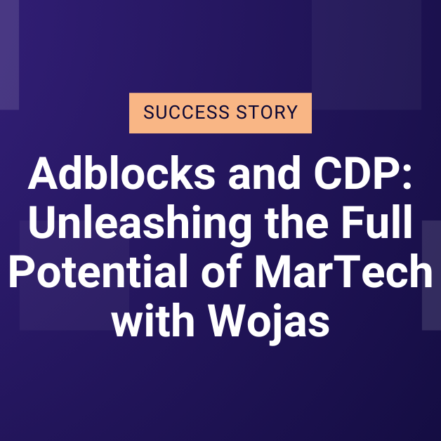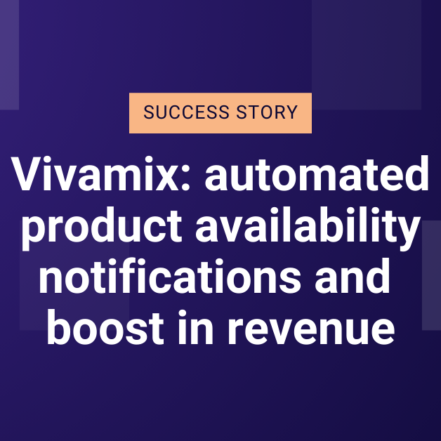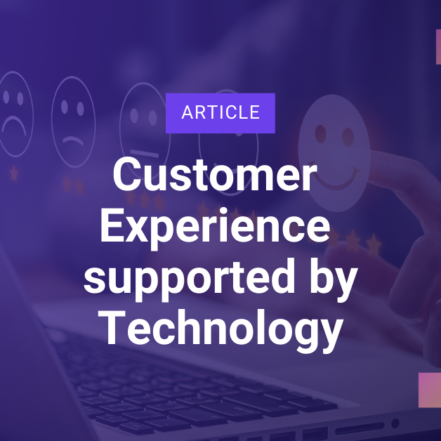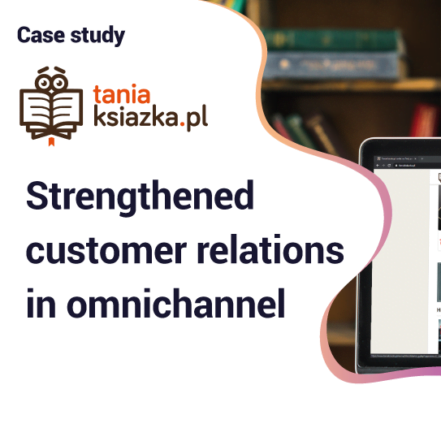Arek Kustra speaks with Radosław Kryger about CRM and Marketing Automation from a long-term perspective – from strategy and data to the teams that set successful organizations apart.
Participants:

Radosław Kryger – CRM Marketing Manager at ECCO Europe. Quality- and success-driven Marketing Specialist with a multidisciplinary background spanning CRM, offline, digital, and omnichannel strategies. Skilled in building and leading high-performing teams, with hands-on experience in marketing technology to support and scale modern marketing practices. Proven track record in executing complex marketing operations across European markets.

Arek Kustra – Founder and CEO of Vecton. Customer analytics expert and the head of Vecton, a CRM and Marketing Automation consulting agency. With 20 years of experience in market research, data analysis, and personalised marketing, he helps companies unlock the potential of CRM in their businesses.
Arek Kustra: Hi! To start off, tell us about your role at ECCO and how it involves automation, personalization, and customer interaction.
Radosław Kryger: My journey has been quite interesting – I actually started in sales, but I’ve spent most of my time involved in marketing-related areas. I also worked with CRM back when it was completely offline – basically a one-way communication channel to a customer database, just hoping for some conversion. That was before 2010 – interesting times.
These days, I’m fully involved with e-commerce and CRM in its true form. I lead the team responsible for the entire CRM channel at ECCO. On one hand, we manage CRM-driven marketing activation for 24 European countries, and on the other, I oversee the development of the channel – working with central and local teams to ensure that CRM becomes more modern every day, with a stronger customer focus, better performance, and improved experiences.
Things have evolved rapidly. When I first started in CRM, it wasn’t modern at all. We were focused on maintaining communication, upgrading where we could, and fixing what was broken. We’re now almost done with implementation of a new system, and the processes have been evolving significantly for over a year. You could say we’re only now starting to engage in real marketing automation.
Fingers crossed! Based on your long-standing experience and perspective on CRM’s evolution, how would you describe the current state of CRM in large B2C brands like yours?
From what I see, the technology is far ahead – but how companies use or implement that technology is a different story. There are a lot of excellent CDXP systems on the market. In fact, there are so many that you can’t possibly know them all in depth or choose “the best.”
When it comes to communication and what customers actually need, there’s still a long way to go. The market hasn’t caught up with the potential of the technology – especially when it comes to new tools like AI. But the technology itself isn’t the most important thing. It’s how you implement it, what environment you’re implementing it in, and what infrastructure you already have in place. Everything has to work together properly.
In your opinion, what are the biggest blockers preventing companies from using the technologies they already have to their full potential?
I think the answer depends on the size and maturity of the company, but across the board, a major issue is human resources. To put it simply, the technological possibilities often outpace the human resources required to implement them effectively.
In our case at ECCO, with 24 markets, every email has to be tailored to the right situation, the right customer, and the right moment. Multiply that by 24 languages and you’re looking at a huge volume of content – too much for any team to handle manually. That’s why technology is so critical.
Absolutely. Data is also key – but also a big challenge, especially creating a unified customer profile. There’s offline, online, multiple channels and touchpoints. Customers are mobile, doing research and making decisions in different ways and places.
Exactly. The focus needs to be on the right kind of data – your own first-party data. That’s where loyalty programs come in – they allow you to connect data properly. Once you have that, you can analyse, segment, and use it effectively.
People are more cautious about sharing their data now. That’s a growing challenge. So quality matters more than quantity. You can have a huge database full of meaningless or seemingly valuable data – it doesn’t help. What really matters is the group that genuinely wants to interact with your brand. The key is growing that segment, nurturing your base, and using affiliate programs and other methods to enhance it.
But in terms of quality, especially in today’s difficult data-collection environment, I believe loyalty program data is the most valuable asset.
Clearly, CRM and Marketing Automation are complex – multiple systems, integrations, and a long-term investment in team capabilities. All of this costs money. On the other hand, these channels deliver tangible business value. So the big question is – how should companies evaluate the ROI of their CRM efforts?
It’s a tough one. From my perspective, the key is to think holistically and coherently. One big issue is implementing partial CRM functionality within an already complex technological setup. Fragmented rollouts cause delays, complications, and sometimes serious problems when you try to integrate everything later.
CRM works best when it’s fully integrated. That’s why your integration strategy and data architecture should be thought through at a strategic level – not just for the next 2-3 years, but much further ahead.
Absolutely. And in the end, what matters is how the interaction feels to the customer. Internally it’s a complex ecosystem – languages, segments, variations – but from the customer’s perspective, it has to feel personal and intuitive. How does a large, well-known brand ensure that kind of communication quality?
That’s the tricky part – not so much in theory, but operationally. As I said, managing this across so many languages is quite the challenge.
The key direction is automation. Instead of “campaign after campaign,” we’re moving toward automated flows. Even if the total volume of communication decreases, it’s more organically received by the customer, which leads to better results.
Loyalty programs also play a big role – communication within a loyalty program feels natural and customers are more receptive to it. Those are the two main approaches we’re taking to stay effective in today’s noisy environment while delivering communication that’s truly relevant.
Moving to that kind of automated setup while maintaining high quality takes serious skills. How do you structure a CRM team in a large company to manage this kind of communication effectively?
A big part of it is prioritizing what needs to be done manually versus what can be automated. Human work equals higher quality; system work equals greater scale.
There are lots of areas to cover – from content and integration projects to GDPR and legal concerns. So it’s definitely not easy.
Right now, I have a partly new but excellent team. Everyone has their own area of expertise, and as a team, we complement each other and work smoothly. Of course, we still have challenges. As we’ve said, it’s a complex environment and expert knowledge is often essential. But with a talented and engaged team, there’s no challenge we can’t overcome.
Let’s wrap up with a broader view – based on your long experience, where do you think CRM is headed next? We don’t need to go too far into the future, but what trends do you see on the horizon?
In the short term, it’s clearly all about AI – finding new ways to engage with customers, a sort of “trigger 2.0.” In the past, we didn’t have the data or segmentation capabilities. Now, AI can suggest approaches we wouldn’t have thought of ourselves. But one big risk right now is maintaining consistent communication – deciding what we can delegate to AI without losing our brand voice or coherence.
Longer term, I think it’s going to be about the digitization of everyday devices – the Internet of Things. Maybe in 10 or 15 years we won’t just be sending messages to inboxes, SMS, or WhatsApp. Maybe we’ll be displaying messages on refrigerators or communicating via any device at all.
The channels will evolve, but the business goals will remain: attracting the customer, keeping their attention, and building loyalty.
One last question – what keeps you motivated after all these years in CRM? It’s a challenging, constantly changing space. What’s your take?
I think what makes CRM exciting is that there’s always something new – new tech, new problems to solve, new areas to explore. It’s not a field you can master in two years. Nothing is ever static. And solving those problems is incredibly satisfying.
Also, among all areas of marketing, I believe CRM and Marketing Automation are the most organic channels. The customer chooses to interact with you. They trust you with their data, curiosity, and attention.
That’s very different from sending out paid marketing messages to people who didn’t ask for them. CRM is more natural, more respectful – and more enjoyable to work with. And of course, the results speak for themselves.
That’s a great note to end on. Thank you for the conversation!
